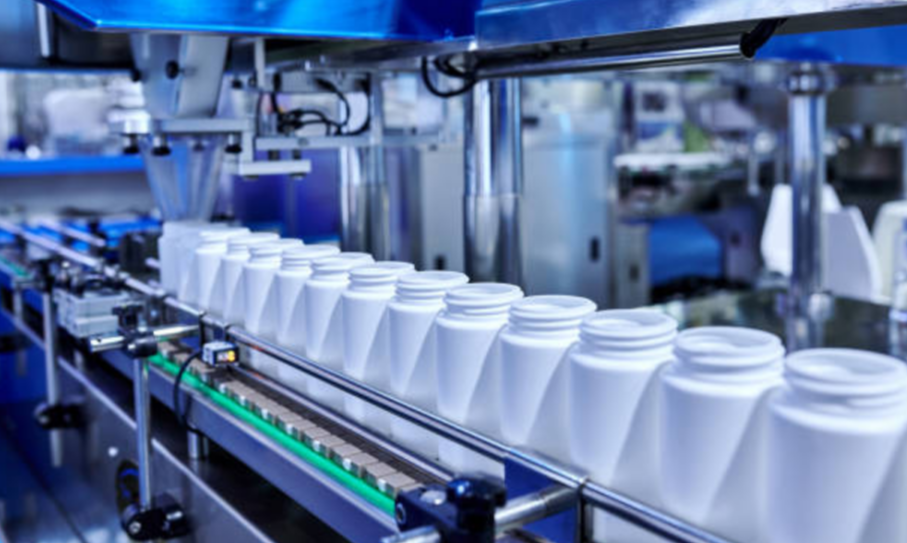
Inside the Growing Demand for Protein Powder Packaging Machines in the Sports Nutrition Sector
Health and fitness enthusiasm is spreading fast worldwide, pushing the sports nutrition sector into overdrive—especially for protein powders. Gyms, professional athletes, and online supplement retailers are clamoring for ever-larger, shelf-stable, and appealing packets. To keep pace, formulators must deliver superior powders and, equally critical, streamline packaging that scales without sacrificing quality. Right now, the protein powder packaging machine is the beating heart of that operation.
Automating the packaging line transforms the game. Robust, enclosed powder fillers, cappers, and labelers shrink cycle times, uphold strict cleanliness standards, and protect sensitive powders from moisture and oxygen. For contract packers and brand owners, the move toward fully integrated, high-speed machines is not optional; it’s the only way to satisfy bigger volumes, shorter runs, and e-commerce-ready formats. Understanding the inner workings and advantages of these machines is essential for industry players that want to lead the protein powders segment.
In the following pages, we will unpack the driving forces behind the evolving packaging line and detail how smart automation is synchronizing every link, from the last protein blend in the mixer to the final carton shipped to the consumer’s door.
The Surge in Sports Nutrition and Powdered Supplements
The global sports nutrition sector has broadened its reach beyond competitive bodybuilders and elite athletes. More and more daily consumers are looking for high-protein meals, functional foods, and dietary aids. Protein powder—whether derived from whey, soy, pea, or other sources—has settled into kitchen cupboards and is driving strong growth in its category.
This rapid uptake is pushing manufacturers to turn out greater quantities in clean, accurate, and ready-for-retail formats. Companies are now investing in specialized machinery capable of handling powders, upholding strict hygiene standards, and speeding up production without sacrificing quality.
For manufacturers and private-label brands, the clamor for efficiency and uniformity has translated into soaring interest in dedicated protein powder packaging systems and a suite of automated solutions geared specifically for nutritional powders.
Precision and Hygiene: Key Features of Protein Powder Packaging Machines
Protein powder tends to be a fine, sometimes electrostatically charged material that can clump, spill, or become contaminated if handled carelessly. As a result, a protein powder packaging machine is more than a simple filler; it is engineered to create a controlled, precise environment that safeguards the characteristics of the powder from the moment it is dosed to the instant it is sealed.
Key Features for Safe, Accurate Packaging:
- Dust-Free Operation: Enclosed designs with dedicated dust collectors keep particles contained, protecting products and personnel alike.
- Precision Fillers: Servo-driven auger dispensers deliver precise, repeatable dosing, achieving tight tolerances.
- Sanitary Build: Welded stainless frames, quick-release fasteners, and open-frame designs simplify cleaning to meet food and GMP standards.
- Inert Gas Flushing: Adjustable nitrogen injection lowers oxygen levels in sealed packs, enhancing stability and shelf life.
Together, these elements boost quality and minimize waste, protecting margins in premium markets like sports nutrition.
Scaling Without Compromise: Automation as the Next Step
Relying on manual fill and seal stations introduces variation, downtime, and escalating labor costs. An automated packaging machine line turns these challenges into strategic gains as order volumes climb.
Advantages for Protein Powder Packaging:
- Higher Throughput: Machines streamline fill-and-seal cycles to hundreds of units per hour, freeing operators for value-added tasks.
- Consistent Quality: Advanced sensors and PLCs monitor weight and verify seals, cutting deviations and rework.
- Workforce Efficiency: Fewer operators and reduced repetitive motion tasks create safer, leaner shifts and lower overall payroll.
- Fast Product Changeover: Built to handle a range of package styles and sizes—be it stand-up pouches, tubs, or sachets—these machines keep production lines running and downtime to a bare minimum as shifts change.
For B2B manufacturers, adopting automated lines means they can fulfill larger retailer orders, reduce lead times, and broaden their market footprint, all while maintaining the same high product quality.
Flexible Enough for Every Package Shape
Protein powders travel the shelf in numerous formats—pouches, rigid tubs, stick packs, and sachets. An up-to-date automated packaging line can be quickly reconfigured or outfitted with modular stations to meet varied SKU and product line demands.
Typical Types of Packaging for Protein Powders:
- Pouches: Light, economical, and the go-to for online purchases
- Tubs/Jars: Convey a high-end look and provide robust product protection, favored for larger serving sizes
- Sachets/Stick Packs: Perfect for single-serve convenience or trial pack offers
- Composite Cans: Eco-friendly, with excellent barrier protection and recyclability
Such a variable system empowers B2B brands to target distinct customer bases, from price-sensitive fitness enthusiasts to discerning premium supplement shoppers.
Complying with Safety and Sustainability Norms
Today’s packaging process must deliver operational speed and flexibility while also satisfying food safety and environmental laws. This is crucial for businesses shipping globally, where each country has unique rules on labeling, shelf life, and product traceability.
How Machines Help Ensure Compliance:
- Integrated Labeling Systems: Guarantees that product and nutrition information meets regulatory requirements without errors.
- Batch Coding and Date Printing: Provides clear traceability for every batch, streamlining recall processes if they arise.
- Eco-Friendly Packaging Options: Many new machines work seamlessly with recyclable and compostable films, aligning with circular economy goals.
Upgrading to an automated packaging solution also furthers sustainability commitments. Lower energy consumption, reduced material waste, and smarter transport packaging become standard practice—and they matter more than ever to customers and regulators alike.
Conclusion: Staying Competitive in a Fast-Moving Industry
The sports nutrition sector is accelerating, and packaging technology must accelerate with it. For companies intent on delivering premium, high-protein powders quickly and precisely, a robotic packaging machine has crossed the line from luxury to necessity.
The machine improves fill accuracy, cuts product waste, scales throughput, and meets evolving compliance mandates, delivering clear and measurable returns. Firms that adopt automation will anticipate retailer, distributor, and consumer expectations, winning market share, improving margins, and securing long-term sustainability—all in one integrated solution.
The evolving marketplace makes it essential to elevate how products are packaged, since this step directly influences brand perception, operational efficiency, and the bottom line. Investing now in intelligent, flexible packaging technology tailored for protein powders and dietary supplements will safeguard your production line, ensuring it meets both current demand and future growth.



